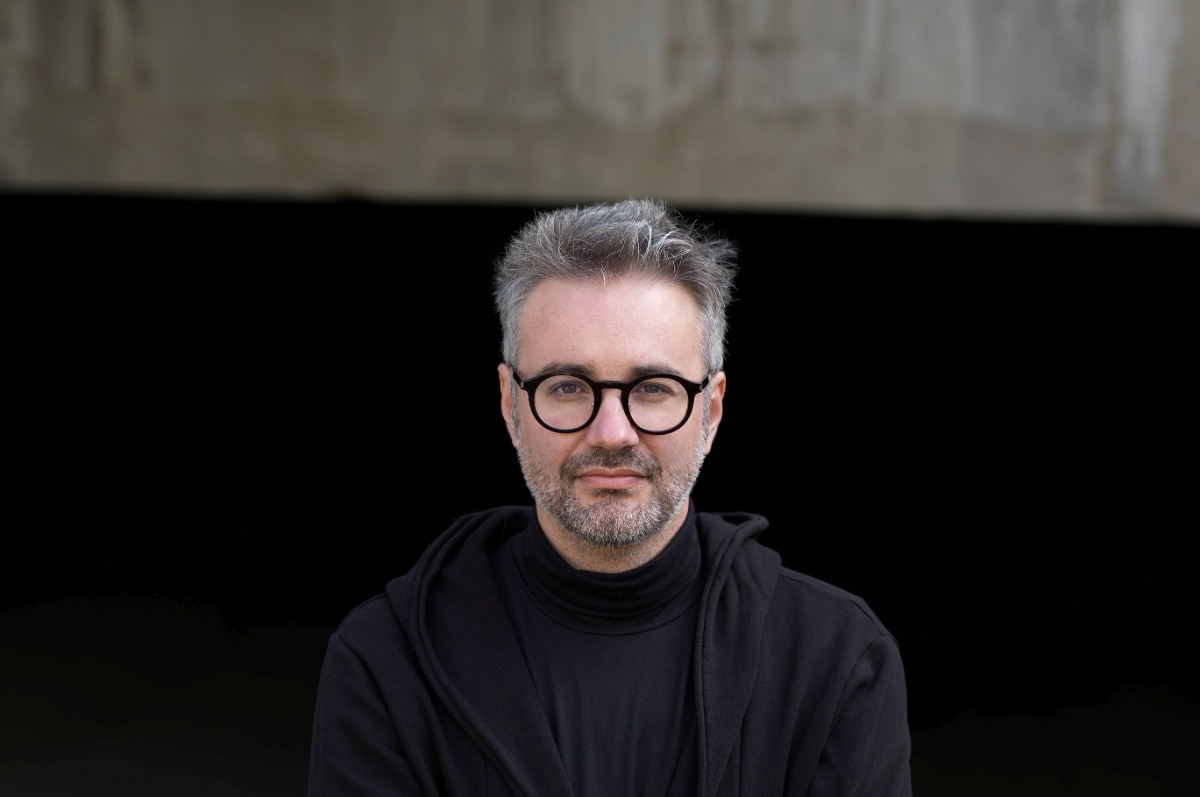
When in Doubt, Go to a Museum
An interview with Tevž Logar, independent editor, writer, and the curator of the exhibition When in Doubt, Go to a Museum at the City Museum of Ljubljana
Currently on display at the City Museum of Ljubljana, the exhibition When in Doubt, Go to a Museum offers both insight and a conversation rooted in the visuality of art between five respectable art collections: Collection Laurent Fiévet (Paris, France), Lah Contemporary (Zug, Switzerland), Ovidiu Șandor Collection (Timișoara, Romania), Fondazione Sandretto Re Rebaudengo (Turin, Italy), and Thyssen-Bornemisza Art Contemporary Collection – TBA21 (Vienna, Austria / Madrid, Spain). It is emphasised that in this case, the aim of the exhibition is not to exhibit these particular private collections but rather a valiant attempt to illuminate, through their interaction, important aspects related to art collecting as well as the context of time and the role of private collections in documenting it. Each of these collections is a unique sign of its time – a snippet of thoughts, feelings, opinions and artistic vision that were in constant dialogue with its creator, the collector.
“This thematically curated exhibition has been designed with two aims in mind: first, to reveal the relationship between society and art, and second, to reflect on the environment in which artists work, be that their personal living space or the wider context: questions of identity, power systems, gender and economic relations, and ideologies and their mechanisms. The conceptual framework of the exhibition can also be understood as an opportunity to come to terms with the state of the world – all the more so given the new, post-pandemic world in which we will find ourselves – and to reflect on the lost social values of our time. These can be seen in the relationships between the social and the political, our living space, and the possibility of change. For this reason, the exhibition does not aim for a linear chronological narrative that moves from one isolated thematic monolith to the next; instead, it presents a selection of artistic positions that reflect on the consequences – personal and social – of the media chosen and the research carried out: consequences that are frequently unexpected, since there are some things in our society and culture that we simply do not think to consider,” states the exhibition’s press release.
The exhibition has been put together by Tevž Logar (1979), an independent curator, editor and writer who collaborates with various galleries and institutions. For the 58th Venice Biennale in 2019, Logar worked with the pavilion of the Republic of North Macedonia as a curatorial consultant, and with the pavilion of the Republic of Kosovo as a writer. He has curated or co-curated a number of group and solo exhibitions, including the 54th Zagreb Salon: Without Anesthesia (2019); Borderline Relation (2018); Ulay: I Other (2017), Vadim Fishkin: Light Chaser (2016); Ulay: Irritation (2015); Crossings (2014); and Jasmina Cibic: For Our Economy and Culture, for the Slovenian pavilion at the 55th Venice Biennale (2013), among others. He has also worked with a number of respectable art institutions in Europe and around the world. From 2009 to 2014 he was the artistic director of the Škuc Gallery in Ljubljana, Slovenia, and a lecturer in 20th-Century Art History at the Academy of Visual Arts (AVA) in the same city. He wrote the screenplay for the full-length documentary Project Cancer: Ulay’s journal from November to November (2013), and is a co-founder of the Ulay Foundation (2014) in Amsterdam, where he now sits as a member of the Advisory Board. Logar lives in Rijeka, Croatia.
Arterritory.com presents the following conversation with Tevž Logar, in which we speak about this latest exhibition as well as art collecting and the role of museums in the post-pandemic world. We also touch upon the troubling political climate in Slovenia, which has resulted in the replacing of several museum directors, and the alarming war against critical thought being waged by Slovenia’s current Prime Minister, Janez Janša, and his government.
A private art collection is, in one way or another, the mirror of a collector, the mirror of his/her personality. The exhibition When in Doubt, Go to a Museum features works from five different private art collections. How would you characterise this mirror (i.e. exhibition) made up of five unique reflections? What does the exhibition say about collecting and the time we are living in?
The exhibition can be read in two directions. The floor plan of the exhibition space in the City Museum of Ljubljana makes it possible to present the collections as “case studies” in which the artworks on display “mirror” the particular internal logic of each collection. Yet the exhibition does not seek to be a compendium of five estranged monoliths, but rather showcases five self-contained structures sharing the idea that an understanding of social or political change reflects also as an awareness about the way a particular medium works in a particular space and time. Consequently, through one perspective, the exhibition reflects five different strategies of collecting, while on the other hand, the selection of works presents a particular narrative of artistic production from the historical avant garde to the present day – and upon closer look, reveals the very precise agency of the artists and their in-depth reflections on society.
Photo: Exhibition view, When in Doubt, Go to a Museum; ⒸAndrej Peunik / MGML
Please describe the process of how the works were selected. Why, exactly, were these five collections the ones that pinged on your radar? How closely have you worked with the collectors themselves?
First, I need to stress that the whole process of the project could be divided into two parts. The first one was general research of many private collections, since I wanted to see and research as much as possible. Through this process, a reduction already happened because I concluded that I want to work with collections that also do public programmes. I considered this especially important because the main idea of the project was that the understanding of a collection, as an entity, should go beyond the idea of it being merely an asset or an investment; it should reveal the collection’s additional role in disseminating knowledge through publishing, exhibitions, research, production support, residencies, and non-formal education. Based on the activities of my research, I managed to establish a basic idea about the conceptual frameworks of the collections and what their core activities are. This then led me to the final selection of collections: Laurent Fiévet, Lah Contemporary, Ovidiu Șandor Collection, Fondazione Sandretto Re Rebaudengo, and Thyssen-Bornemisza Art Contemporary Collection.
Then the second part of the project started, in which I invited collections to participate in the project and establish an active dialogue. I proposed to them the conceptual framework of the exhibition and worked individually with all of them. It was interesting – with all of them there was one moment in our exchange when they asked me to propose a possible selection to them, i.e. they gave me a free hand in choosing, but with the condition that the collection will, of course, need to authorise it. I am, in any case, very keen on establishing a dialogue in the context of my work, so with all of them we made a joint decision at the end because we all believed that the internal logic of the collection needs to be as precise as possible.
Photo: Exhibition view, When in Doubt, Go to a Museum; ⒸAndrej Peunik / MGML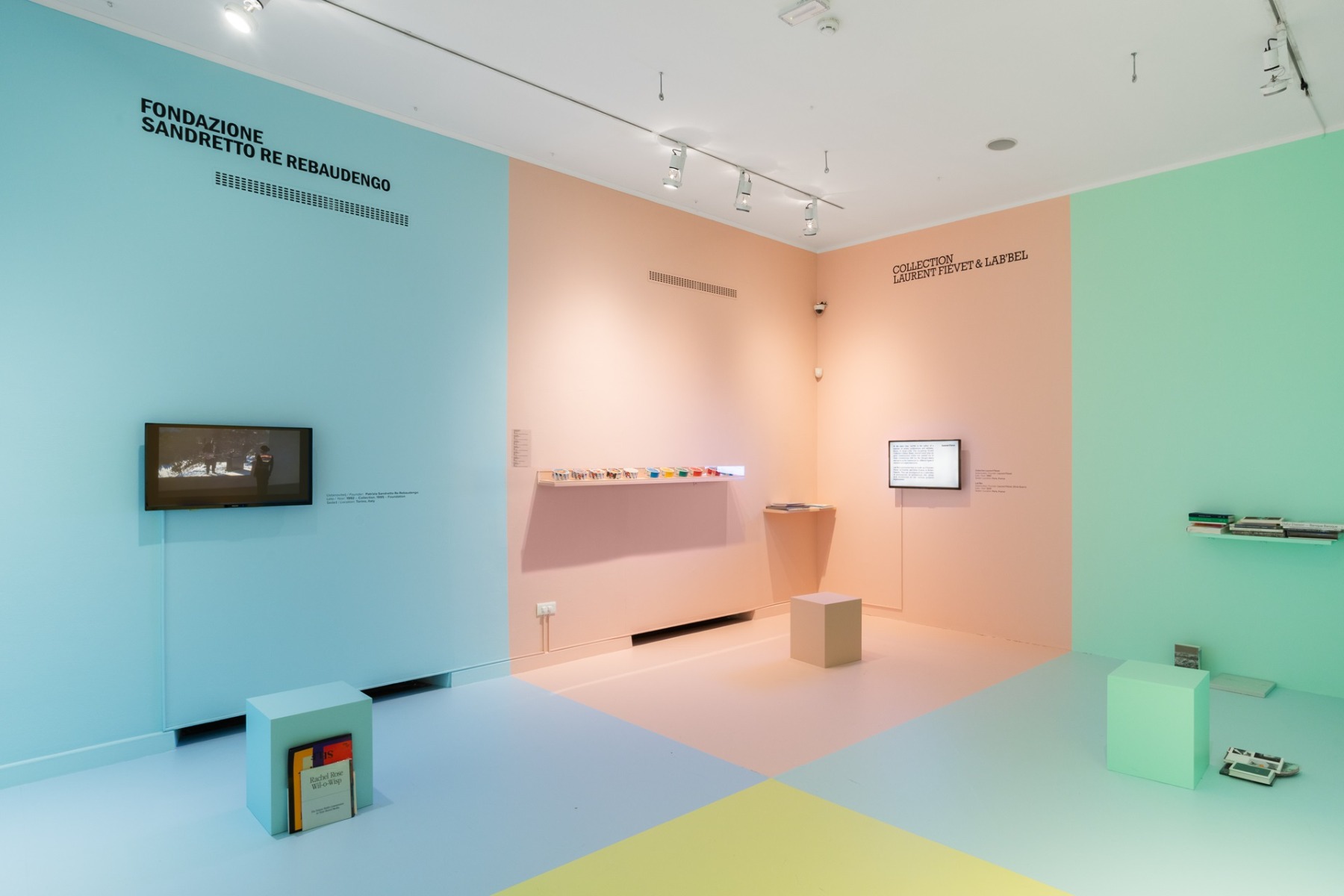
This was very productive for me, and I am very grateful for the engagement of all the people in this process because in this way I could understand the tendencies of each collection and how they can be connected with each other. I think this was also the biggest challenge for all of us – how to make a precise narrative of the collection through the selection of a relatively small number of works, and how the selection would function in complement with the other collections. When I talk about complementary relationships, I don’t mean just that particular selection of artworks; for me, the “vertical” of a collection’s activities is equally important, and that is why I also decided to create a separate room with additional information where the public can learn about the collections in their entirety through various documentary materials. I am incredibly grateful to the collections that they embraced this idea and contributed very complex ranges of materials to mount this presentation as well. Consequently, the project has a strong educational note – since its inception, the intention of the museum and its director, Blaž Peršin, was that the project should stimulate a discourse on collecting in Slovenia and in the wider region as a whole.
Photo: Exhibition view, When in Doubt, Go to a Museum; ⒸAndrej Peunik / MGML
What makes a great collection? Is a collection a personal memory, or a collective one?
Well, I am very fond of the idea that art is meant to be accessible to all of us and that it is not locked up in in a vault as a fetish. I don’t say that every collection should be public, or that it should have its own museum, but I believe that owning an artwork is also a responsibility. And part of this responsibility is the awareness that artworks are a joint cultural legacy and that they play an important role in our everyday lives. Not in the sense that an artwork can change the world, but I do think it can contribute to critical thought, which can, in turn, lead to the possible improvement of our everyday. It can also remind us of things we might forget with all this violence around us. Through this perspective, I believe there is not much difference between personal and collective memories, and there are many collections that prove that. Speaking of either public or private collections, I think that the most important thing is that the narrative of the collection is precise in terms of its conceptual “anchors”. And then there are other aspects that define its function or role within the system of contemporary art; but this, of course, leads to other, different questions.
Photo: Exhibition view, When in Doubt, Go to a Museum; ⒸAndrej Peunik / MGML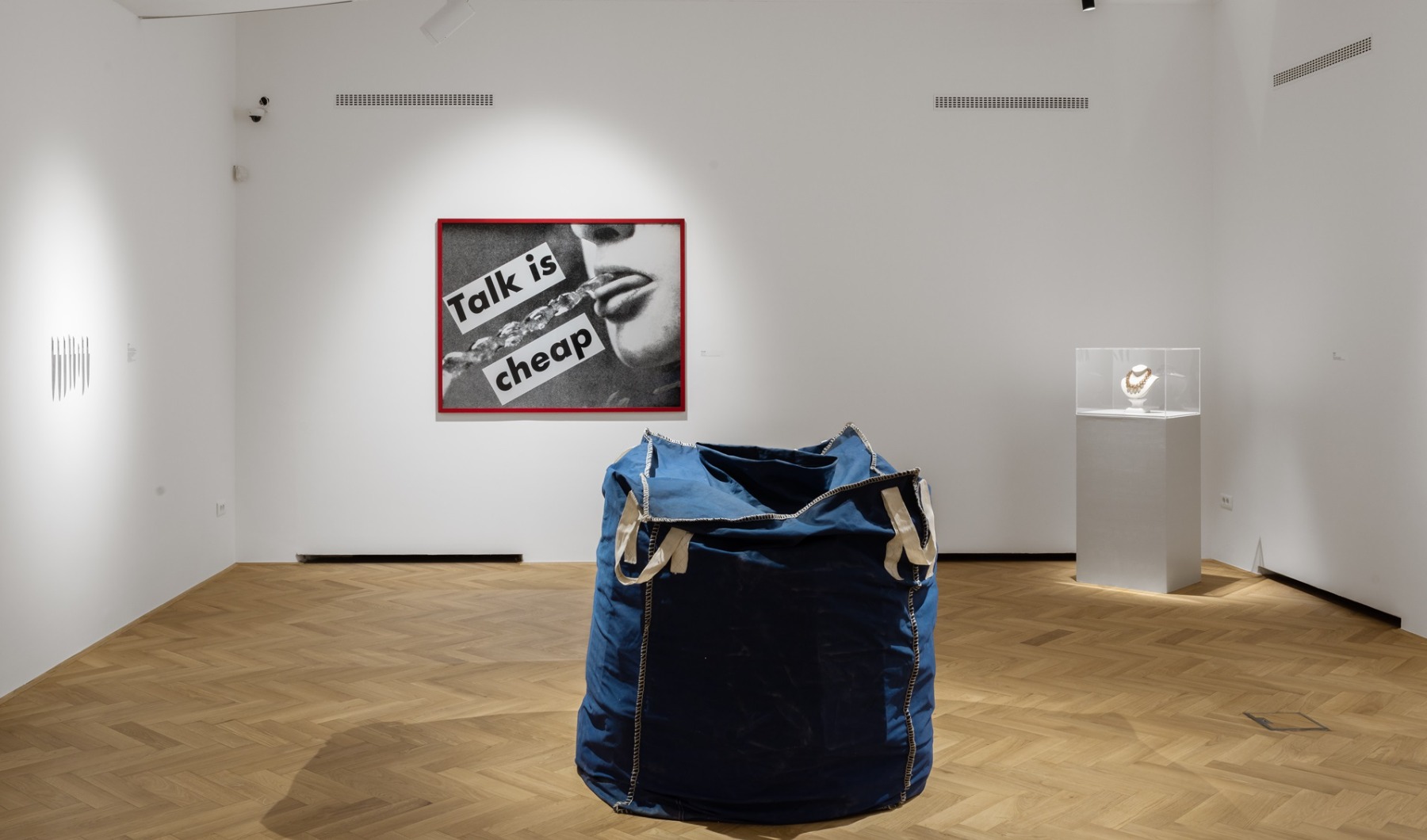
Is a collector also a critic in some way?
Well, I am not sure I would define the collector as a critic; at least not in the classic understanding of this role within the system of art throughout history. But without a doubt, a collector is a person that is very much involved in the process of valorizing the artwork, or even an artistic practice. I don’t mean just in the context of the processes related to the work’s economic value on the market, but also through the collector’s active involvement in productions, institutional collaborations, education, publishing…
Photo: Exhibition view, When in Doubt, Go to a Museum; ⒸAndrej Peunik / MGML
Do you agree that all good art should end up in a museum?
Well, as a utopian idea, I would agree with that. But in the existing system, this is not possible. Many artists are already now in a very precarious position, and if we were to eliminate the private sector, it would be an even bigger disaster. I think that throughout the history of art, it was always assumed that there was a relationship between art and capital – at first through ecclesiastical and secular authorities, and later, after the Industrial Revolution, which transformed people’s lives not just in terms of new technologies but also through its major impact on the economic structures of European countries. Overnight, the middle and upper-middle classes found themselves with more disposable income, meaning that for the first time they were not only interested in entering the art market but also had the capital to do so. And I believe it is beautiful if a good work of art ends up in private hands as well – whether as one item or as part of an ambitious collection. I just think that this is a responsibility, and the person that owns such artwork should be aware of that.
Photo: Exhibition view, When in Doubt, Go to a Museum; ⒸAndrej Peunik / MGML
What do you think is (will be) the role of the museum in this rapidly changing world of ours?
I believe a museum should be a place that stimulates critical thought and brings us out of our comfort zones. But for this to happen, I believe it is important to be aware that the social and political aspect of art should not be utilised and “flattened” by either its form or aesthetic parameters. In this context, I always remember what Ulay told me when we were preparing our first show at Škuc Gallery in Ljubljana: “Aesthetics without ethics are cosmetics.” What I mean by that is that institutions and galleries should not conceal the social and political aspects of art, but support it through their programmes or other distributional possibilities.
Photo: Exhibition view, When in Doubt, Go to a Museum; ⒸAndrej Peunik / MGML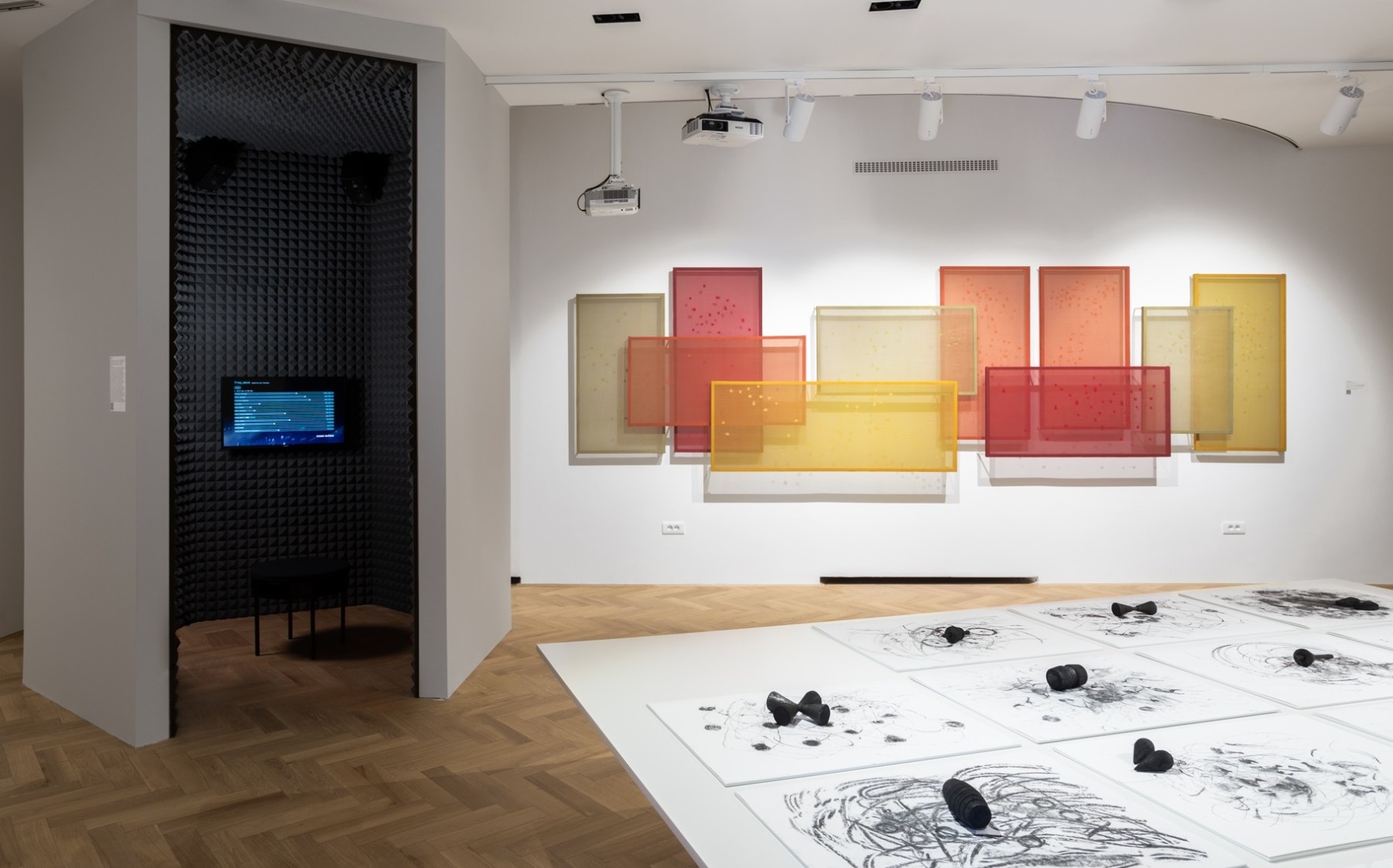
And what is the role of the collector? How do you see it in the post-pandemic context?
I already mentioned before that collectors play an especially important role within the system of contemporary art and that it is reflected through their various activities. Some are more visible and present – mostly through their involvement in various projects, productions and collaborations, while other activities happen more in the “background” – like purchases, sitting on various committees and advisory boards… I believe this role will remain in the post-pandemic context as well, maybe even with some new initiatives that will contribute to the “recovery” of the system. Like TBA21’s amazing project st_age, which we are presenting within the exhibition – it’s a new digital platform launched as a new model to support artists and cultural producers in the process of transforming the challenges caused by the Covid-19 crisis. Or with continuous and very precise programming that collections already do, like Fondazione Sandretto Re Rebaudengo with its educational programmes and production support, Ovidiu Șandor with the Art Encounters biennial and the foundation’s local activities, Laurent Fiévet with its Lab’Bel activities…
But above all, I think that collaborations and solidarity are a cause that we should all be thinking about. I realised this also while preparing this project. Only through our joint efforts did we manage to bring it about, and I am really happy that from the very first moment, the collections saw it as something positive and that we should all fight for it. It is one thing to have amazing collections and artworks presented within the exhibition, but what is really valuable is that this is the result of a collective effort done in a very difficult time. And I can see that now, after it has opened, the public already appreciates it very much.
Photo: Exhibition view, When in Doubt, Go to a Museum; ⒸAndrej Peunik / MGML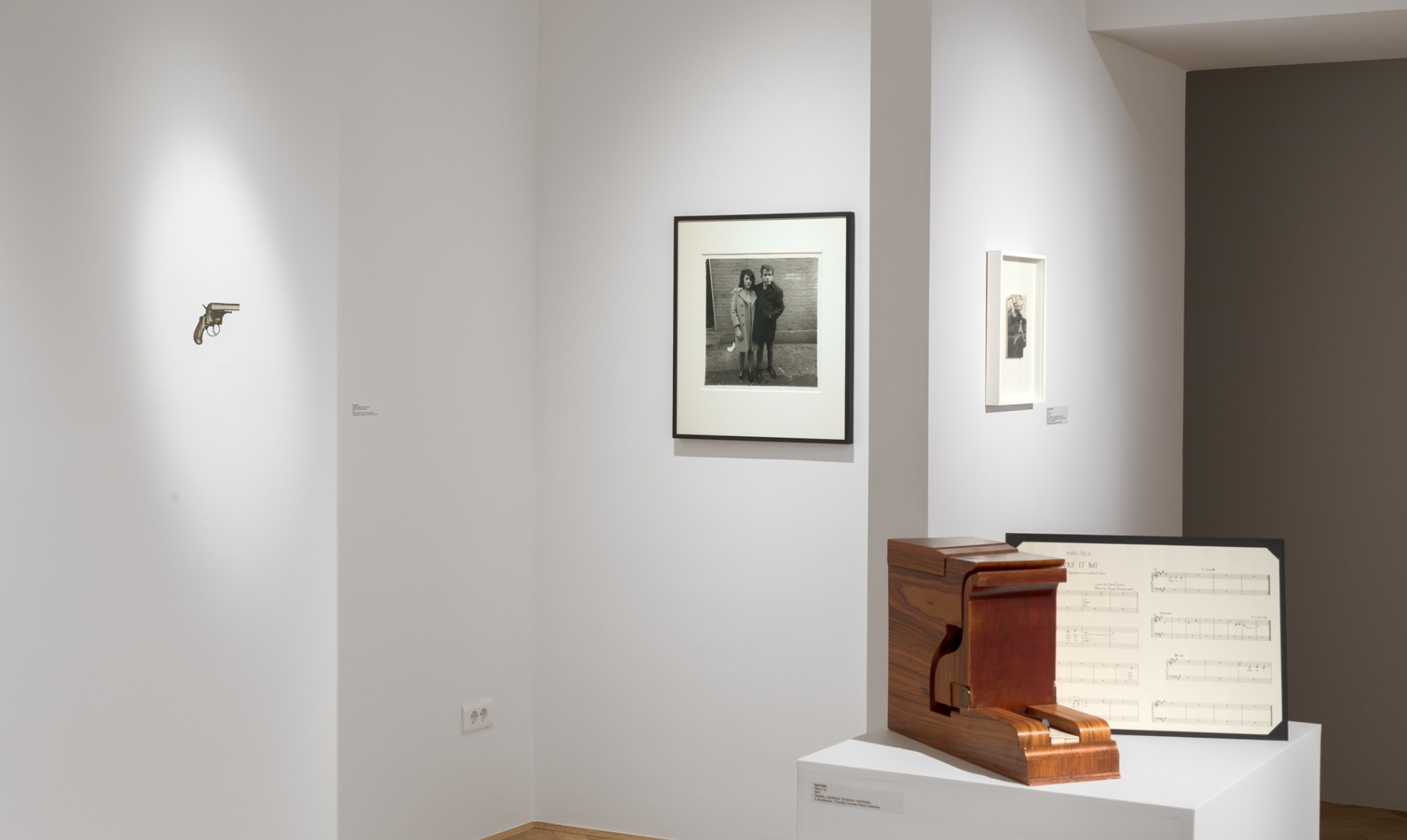
The title of the exhibition, When in Doubt, Go to a Museum, makes me think about the power of art and its ability to influence human behaviour – to change people's perceptions and influence their psychological well-being. The global pandemic, which has made people emotionally fragile, vulnerable and lonely, has only exacerbated the need to find innovative solutions to society’s growing mental health problems. Do you think art could be one such solution? Does art have, if not exactly curative powers, at least a positive influence on people?
The title is meant to be ambivalent. In the sense that we invite people if they’re in doubt, but we are not saying whether we will get rid of their doubt, or maybe even stimulate it. I see doubt as something positive, something that urges us to think about things. A little bit like what Tristan Tzara wrote in the Dada manifesto: “Dada places before action and above all: Doubt.” I don’t believe art can change the world. We wake up every day and there are always new, difficult things happening. Wars arising, economies collapsing, people starving and dying, forests and species disappearing, weather catastrophes emerging… and this is caused by the mechanisms and interests that are in power. Art isn’t. But I strongly believe that art can challenge our thoughts and emotions and produce knowledge – something that can push individuals and, consequently, society towards agency, and maybe show the possibility of initiating change. On a personal or collective level. I don’t know if this is a curative power, but I know that it is something that we desperately need in these times.
Photo: Exhibition view, When in Doubt, Go to a Museum; ⒸAndrej Peunik / MGML
Before the pandemic, it was very common to talk about the absurdity of the art market and price bubbles in specific niches. When speaking about private collections, the aspect of economic value always enters the conversation. Is it even possible to measure the true worth of a work of art in terms of money? And isn’t its conditional price actually just a reflection of the world at this moment?
I believe it is dangerous thinking to define an artwork’s value exclusively in relation to economics. It is necessary to be aware that the value of an artwork is influenced by an extremely large number of factors, and this is often a display of the power relations that prevail in the art system. It often seems that there are several worlds in the world of art – the world of public institutions, the world of private galleries, private collections, the media, academia, theory... and these somehow work in parallel even though between some there is seemingly no contact. But this is not the case. All of the above parameters play a key role in the valorization of a work of art, and they are very often intertwined. To be more plastic.
The value of an artwork is higher if it has a continuous institutional history, if it is written about, if it is theoretically and academically contextualised, if it is present in the media and, of course, if it is capital-supported. But I am still relatively romantic in this context, and I appreciate art that challenges me. And that has nothing to do with its economic value. Just as I do not want to look at art exclusively through a solitary perspective of concept, form, gender, race, class, or geopolitics. For me, art is a complement of various elements, and I want to see the complexity of these as the only criterion. Make no mistake. I am not naive, and I am well aware of the mechanisms of the art system and the discourses and interests that directly affect the valorization of a work of art, yet I see this more as a knowledge that allows me to navigate within the system rather than blindly swear by it.
Photo: Exhibition view, When in Doubt, Go to a Museum; ⒸAndrej Peunik / MGML
The exhibition is taking place in Slovenia, at the City Museum of Ljubljana, yet none of the private collections represented are based in Slovenia. Why is that? How active is the collecting scene in Slovenia at the moment?
Well, this is not exactly true. The Lah Contemporary collection originates from Ljubljana, but the foundation was established in Switzerland due to the fact that Slovenia doesn’t have appropriate laws for foundations. There is no tradition of foundations in the region; there is no interest in this kind of legal entity and, consequently, the cultural politics haven’t done enough to make these things work in all of their complexity and as having legal status. But from the very beginning, Lah Contemporary has focused on establishing a relationship between the local and international; I wanted to stress this with a selection in the exhibition in which I also included Slovenian artists. The collection relates to Slovenia, and not just through the purchase of work by Slovenian artists but also with various activities like research, production support, collaborations…
Without a doubt, the Lah Contemporary project is the most complex and pioneering “collection project” in the region. Its public activities will culminate in a future museum in the town of Bled (Slovenia) and to be designed by David Chipperfield Architects. Besides that project, I also have great respect for the collection of Slovenian architect Vasa Perović – his knowledge, precise research, and network prove how important those elements are when building an international collection with relatively limited funds.
There are also some other initiatives, but they are more or less locally oriented, and this frames them in a very narrow field of national interest. I can relate this problem to the fact that an art market does not exist in the region; in addition, this state is indirectly influenced by many other things such as tradition, education, the economy, and cultural politics at the national level. The latter should actually play a key role in Slovenia as the area is small, the accumulation of capital is negligible, the gallery network is underdeveloped, and there is no base of collectors. Therefore, it should be cultural politics creating the conditions for this to move forward. But this is not happening. It has been clear for a long time that the people at the Ministry of Culture are not able to define relevant measures and stimulate connections with other sectors that could improve the situation.
Photo: Exhibition view, When in Doubt, Go to a Museum; ⒸAndrej Peunik / MGML
Janez Janša, the current political leader in Slovenia, has been compared to Donald Trump. Over the past ten months his government has replaced the directors of some of Slovenia's most important museums. And this is happening not only in Slovenia. Is this a cultural war? What does it say about the power of art?
Yes, this is horrible what is happening, and I am sorry to hear that obviously the whole world knows about it already. But it is not just that. The whole climate in the country is headed towards intolerance for people who think differently or who are different. And this attitude pushes them to the edge of society. All these changes in the culture field are politically motivated, and they are introducing a new cultural agenda that is anchored in revisionist nationalist ideology. As if this is not enough in itself already, it is being done behind closed doors, with interventions in existing legislation and ignoring both local and international expertise. It is very likely that institutions that had systematically worked towards gaining recognition and becoming a part of international institutional networks could face serious problems because of this sudden change in their programming. I believe this war could be called a war against critical thought and a war against internationalism.
This was also the common denominator for removing museum directors Zdenka Badovinac, Matevž Čelik and Kaja Širok – they all had established very strong connections abroad and had positioned the institutions that they led through an international agenda. For example, Zdenka Badovinac, the now-removed director of Moderna galerija in Ljubljana, had initiated L’Internationale, a project based on collaboration between institutions of modern and contemporary art working together as part of a network, which resulted in various collaborations with institutions like Museo Reina Sofía and Van Abbemuseum. Claire Bishop wrote about it in her book Radical Museology and defined it as a very important alternative to the dominant mantra of museums following the blue-chip mainstream. Aside from the fact that the theory and system adopted by this initiative was extremely relevant in the context of museum politics, everyone working in the field of contemporary art knows how difficult it is to establish connections on such a high level and how difficult it is to maintain these relations in the long term. It is about trust, and when this is gone, your “symbolic capital” is also immediately lost.
I sincerely hope that these institutions have just lost a battle, and not the war. But I am afraid that the current political nomenclature, with its newly appointed expert committees and with the support of bureaucrats, is orchestrating Slovenian cultural politics in the direction of nationalist self-sufficiency and against critical thought. And this is not just an empty grievance of someone working in the field. Another recent case is when Slovenia’s ambassador to Rome rejected to support and promote the exhibition project Bigger than Myself. Voices of Heroes from Ex-Yugoslavia, a collaboration project between MAXXI Museum and Moderna galerija – once again proving that this has become one of the new strategies in Slovenia’s foreign affairs. It’s very sad.
Tevž Logar. Photo: Jaka Babnik
When in Doubt, Go to a Museum, at The City Museum of Ljubljana through April 25, 2021